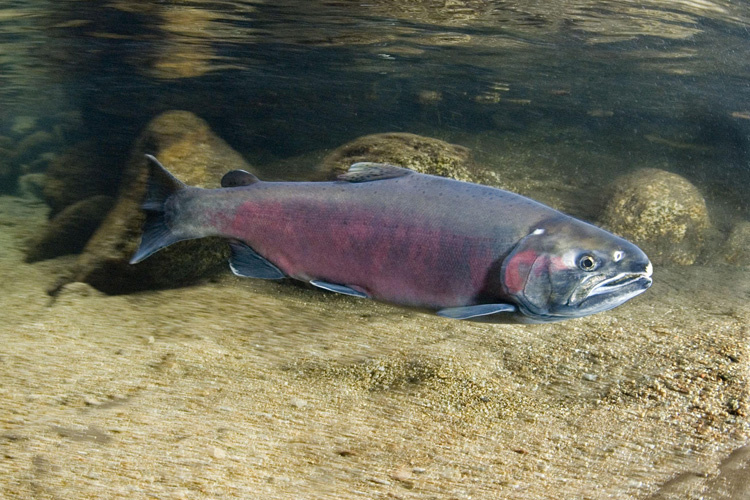
Workgroup meets to look into new management approach for southern Oregon/northern California coast coho
The ad hoc Southern Oregon/Northern California Coast Coho Workgroup met for the first time in June to support the Council in its efforts to develop a new management approach for southern Oregon/northern California coast coho.
NMFS requested the Council assist in its consultation process in response to a court agreement with the Hoopa Valley Tribe, which alleged that NMFS had failed to reinitiate Endangered Species Act consultation on the impacts of ocean salmon fisheries on the stock.
The Council formed the workgroup to develop a harvest control rule for Southern Oregon/Northern California coast coho, and will be guided by the terms of reference which outline the workgroup’s purpose, milestones, and schedule. The Council is scheduled to provide a final recommendation to NMFS in November 2021.
A roster and tentative schedule is in the Workgroup’s progress report provided in June. Their next meeting is scheduled for August 6-7, 2020 and will focus on cataloging existing data (and identifying data gaps), and discussing concepts for potential harvest control rules.
Final risk assessment for Southern Resident killer whales adopted
In June the Council adopted the ad hoc Southern Resident Killer Whale Workgroup’s final risk assessment, which assesses the effects of Council-managed ocean salmon fisheries on the Chinook salmon prey base of Southern Resident killer whales. The Scientific and Statistical Committee reviewed and supported the analytical methods and materials in the assessment.
The Workgroup was also tasked with recommending potential conservation measures or management tools to limit fishery impacts on the prey base as needed, and has shifted its focus to that aspect of its task.
The Workgroup met in April to begin drafting recommendations for salmon management measures based on the assessment. It plans to meet again between the June and September Council meetings to continue developing recommendations for the Council.
The Workgroup will work closely with the Salmon Advisory Subpanel and stakeholders during this process. Any recommendations developed for Council consideration will go through the Council process to solicit industry input and public comment. The Council will eventually provide its recommendations to NMFS. The Council is currently scheduled to discuss this topic in September and November 2020.
Council focuses on salmon management schedule, boundary change
The Council and NMFS are working to improve the salmon management schedule and make a boundary adjustment through an amendment to the fishery management plan.
The first change, proposed by NMFS, would alter the salmon management schedule to avoid instances where regulations cannot be processed in time for the traditional start of the season, May 1.
The second change was proposed by the commercial salmon troll industry and is focused on moving the salmon management boundary line between the Klamath Management Zone (KMZ) and the Fort Bragg Management Zone from latitude 40° 05’ (Horse Mountain, California) five nautical miles north to latitude 40° 10’ to ease enforcement and increase safety. The current groundfish management boundary is at 40° 10’ N. lat., and the additional area would allow safer maneuvering nearshore when the Fort Bragg area is open (the southern KMZ is closed to commercial trolling).
The Council began the process of amending the Pacific Salmon Fishery Management Plan in November 2019 and aims to complete these changes in time for the 2021 ocean salmon season. In June the Council adopted a range of alternatives for public review that covers both the preseason schedule change and the boundary change. The alternatives are consistent with those found in this report, with the addition of a third alternative to keep the five-nautical-mile area closed to commercial fishing when low Chinook abundance calls for ‘de minimis‘ fishing.